Hawaii is a state immersed in natural beauty and awash with sand and surf. Located 2,000 miles west of California, the Aloha State offers residents moderate temperatures year-round, perfect for enjoying an active outdoor lifestyle. When taking a dip beneath the waves with your snorkel gear, you can view stunning coral reefs. Above ground, you can feast your eyes on tropical terrain, lush rainforests, and stunning waterfalls. Besides being products of volcanoes, the islands are also hosts to active and dormant ones. Another way to enjoy all the islands have to offer is by visiting the diverse array of state and national parks. NewHomeSource has compiled a list of our top picks to help you start exploring.
Here are the best state — and national — parks to help you experience Hawaii to its fullest:
1. Waimea Canyon State Park
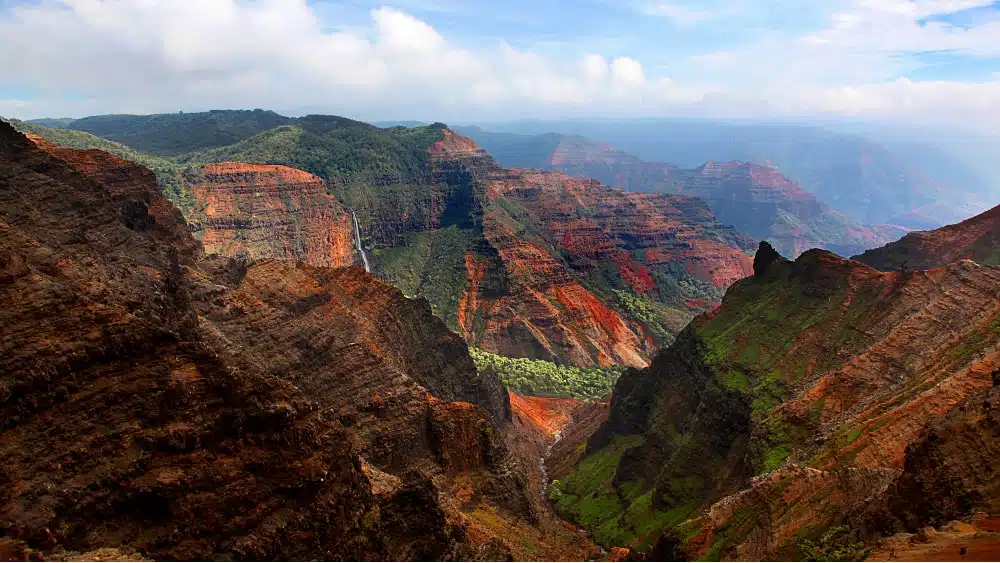
Google Rating: 4.9
Located on the western side of Kauaʻi is Waimea Canyon State Park, which is considered the “Grand Canyon of the Pacific.” While it’s no competition to its grand Arizona relative, the 14-mile-long canyon did carve out a dazzling 3,600-foot gorge. Admission is free for Hawaii residents, and visitors can take in the panoramic view from the canyon lookouts. After savoring the scenic view, enjoy a picnic or take a stroll along a nature trail.
2. Hāpuna Beach State Recreation Area
Google Rating: 4.8
Located on Hawaii’s Big Island, Hāpuna Beach State Recreation Area is a popular destination. Its white sandy coastline is one of most expansive beaches in Hawaii and stretches almost 200 feet, giving visitors plenty of elbow room. Hāpuna Beach lies along the northwest side of the island. Does camping sound appealing? The recreation park has A-frame rental shelters that accommodate four persons. Forget your headphones; you’ll be lulled to sleep by the sound of waves caressing the beach.
3. Mākena State Park
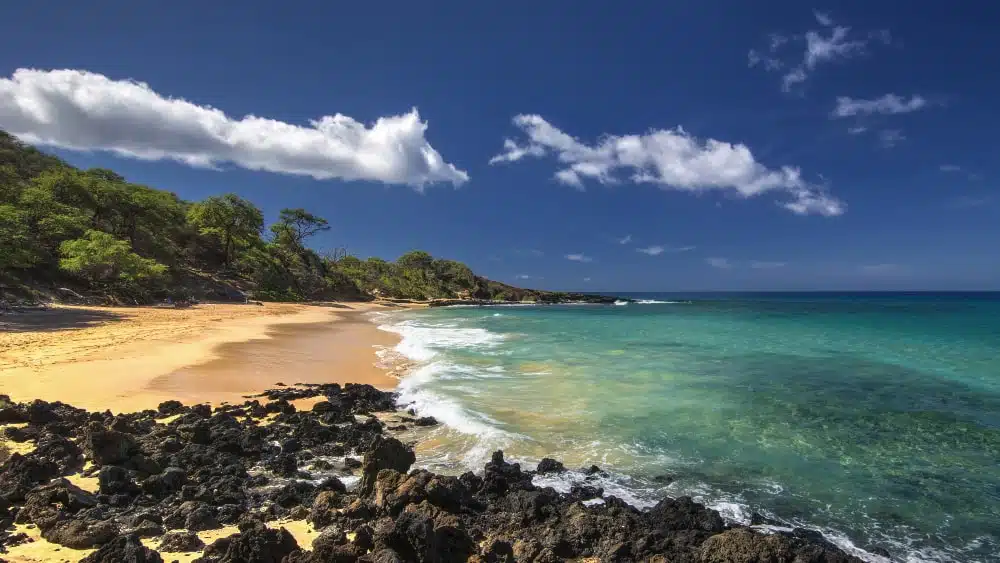
Google Rating: 4.8
Mākena State Park is an iconic beach that has been divided into Big Beach and Little Beach. Lifeguards and amenities are offered on Big Beach but not on Little Beach. Here on the southwestern tip of Maui, you can snorkel, swim, or shore fish. Bodysurfing and board surfing are also popular activities.
4. Nāpali Coast State Wilderness Park
Google Rating: 4.8
The Nāpali Coast State Park is an enchanting area on the northern shore of Kauaʻi. Palm trees like it here, as well as tourists from around the world. The rugged, dramatic cliffs (or “pali”) are a vision of grandeur. Along the 17-mile-long Nāpali Coast, you can kayak to get a better view of the towering cliffs. Hiking and camping permits are available.
5. Polihale State Park
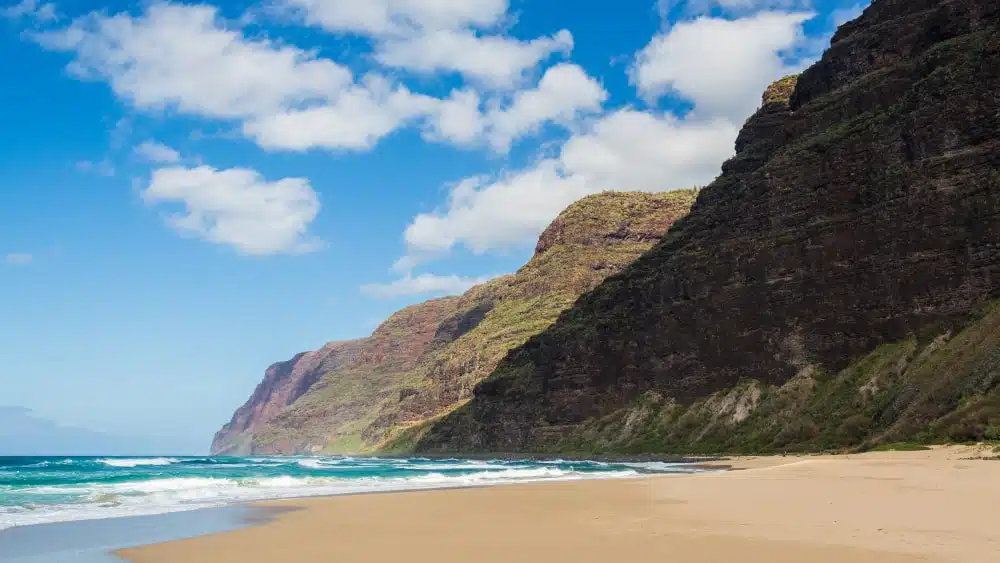
Google Rating: 4.8
While Polihale State Park on the Nāpali Coast is challenging to access — you’ll travel along five miles of unfriendly terrain — the sand dunes on the beach and the spectacular 4,000-foot cliffs of the Nāpali Coast are worth the trip. Your best bet to reach this destination is in a four-wheel drive vehicle. Rental car companies may not permit you to take their vehicle to this park, so be sure you understand all restrictions before you sign a contract. Another way to see the sights is on a coastal boat tour where you can snap photos of manta rays and view underwater lava formations.
6. Diamond Head State Monument
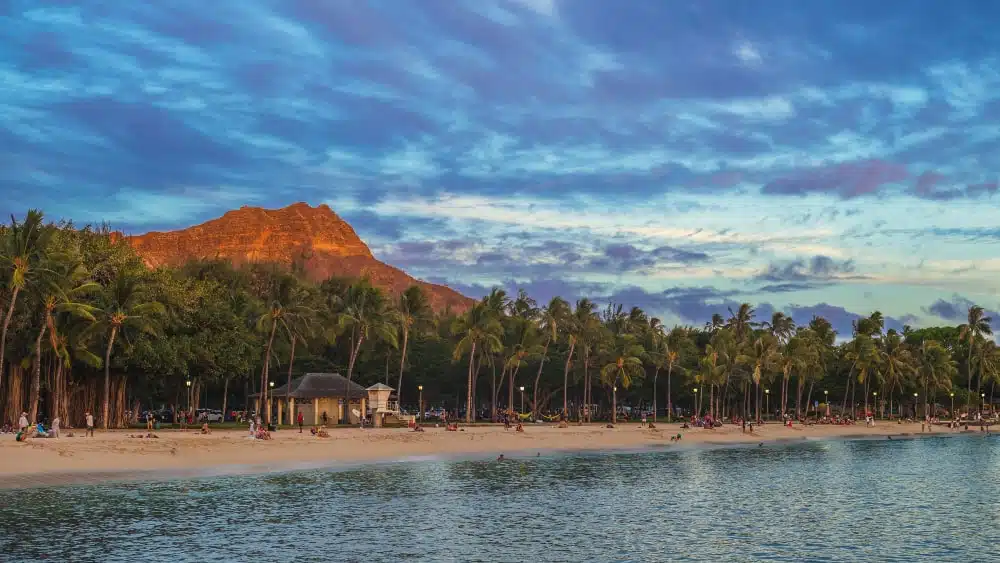
Google Rating: 4.7
Perhaps Hawaii’s most iconic landmark, Diamond Head (Lēʻahi) is on Waikiki’s coast, at the southern edge of Oʻahu. Diamond Head State Park is prized for its hiking trail, military history, and panoramic views. This saucer-shaped crater is a result of a single but massive eruption about 300,000 years ago. Visitors can take a self-guided or narrated tour. The dormant volcano, which encompasses 475 acres, is 762 feet above sea level. The Summit Trail is about 1.6 miles round trip, and if you want to beat the heat, you may want to tackle it early in the morning. Note that reservations are required for entry.
7. Waiʻānapanapa State Park
Google Rating: 4.7
Located at the end of the well-known Hana Highway in east Maui, Waiʻānapanapa State Park offers relief from hectic urban life with its remote and wild volcanic coastline, native hala forest, sea stacks, and black sand beach. Like Diamond Head, because of the park’s popularity, reservations are required for entry and parking. Waiʻānapanapa means “glistening waters,” and visitors can take in the stunning seascape at the scenic viewpoint, go beachcombing, or enjoy some shore fishing — along with the park’s other popular activities like camping, hiking, and picnicking.
8. Kaʻena Point State Park
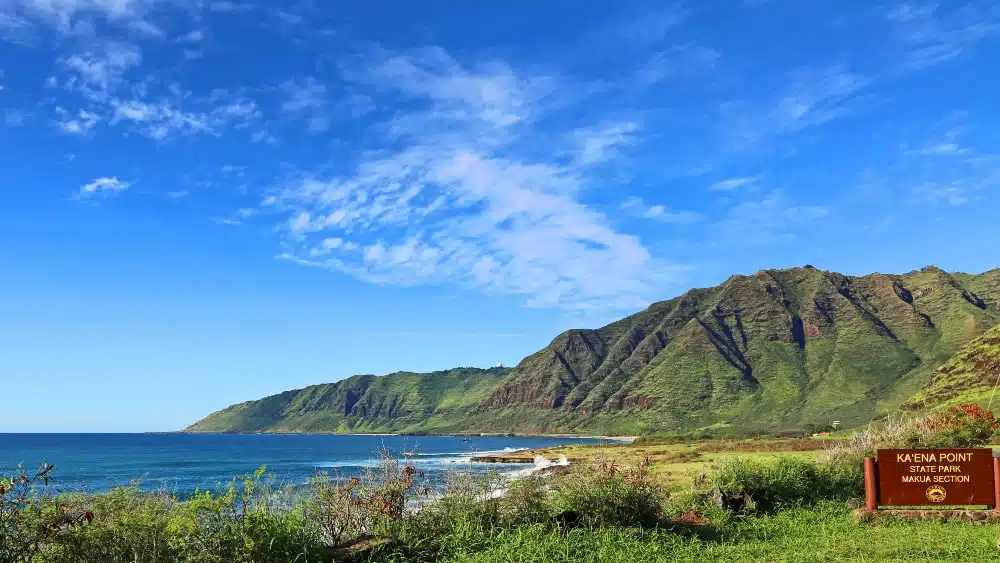
Google Rating: 4.7
The remote Kaʻena Point State Park sits in the northwest corner of Oʻahu and consists of two sections: Kaʻena Point Mokuleʻia Section on the north shore of the island and Kaʻena Point Keawaʻula Section on the west side of Oʻahu. The state park also serves as the gateway to the Kaʻena Point Natural Area Reserve. A large sandy beach and surfing can be found in the Keawaʻula Section, while Mokuleʻia Section offers a more dramatic, wild terrain with rocky coves, tide pools, and sand dunes to explore. While picnicking and hiking are encouraged, camping is not allowed in the park, and no drinking water is available in either section so be sure to bring your own.
9. Ahupuaʻa ʻO Kahana State Park
Google Rating: 4.7
On the windward east side of Oʻahu overlooking Kahana Bay, visitors can enjoy the “living park” of Ahupuaʻa ʻO Kahana State Park, whose mission is to preserve and foster native Hawaiian cultural traditions. In addition to offering hiking, camping, fishing, and beachgoing, the park also provides visitors the chance to visit an ahupuaʻa, or ancient Hawaiian land division, where 31 families currently live and provide educational and interpretive programs.
10. Kealakekua Bay State Historical Park
Google Rating: 4.7
On the Big Island, Kealakekua Bay State Historical Park includes the site of the first contact between Hawaiians and Westerners with Captain Cook’s arrival in 1779. Visitors can take in a traditional religious site, Hikiau Heiau, on the beach of Nāpōʻopoʻo or visit the Kaʻawaloa Flats, where a monument to Cook sits, via a hiking trail or by a guided kayak tour.
National Parks
Hawaiʻi Volcanoes National Park
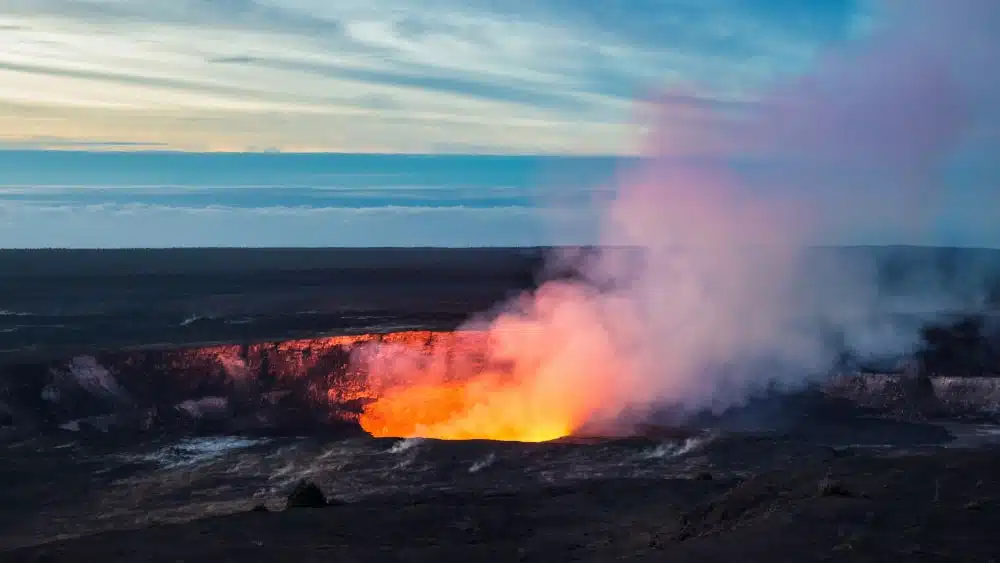
Google Rating: 5
On the southern portion of the Big Island, Hawaiʻi Volcanoes National Park offers exquisite views of unique geological landscapes. Rising 13,680 feet from sea level, the massive park is home to two volcanoes: Kīlauea and Mauna Loa. The park is a habitat to a complex diversity of wildlife including many native birds that awaken the dawn with their songs.
Haleakalā National Park
Google Rating: 5
Outdoor enthusiasts will have plenty of big adventures to choose from at Haleakalā National Park on the southern edge of Maui. You can sightsee, explore the lush rainforest, stroll along the rocky shoreline, or savor the park’s beauty on a nature hike.
Puʻuhonua o Honaunau National Historical Park
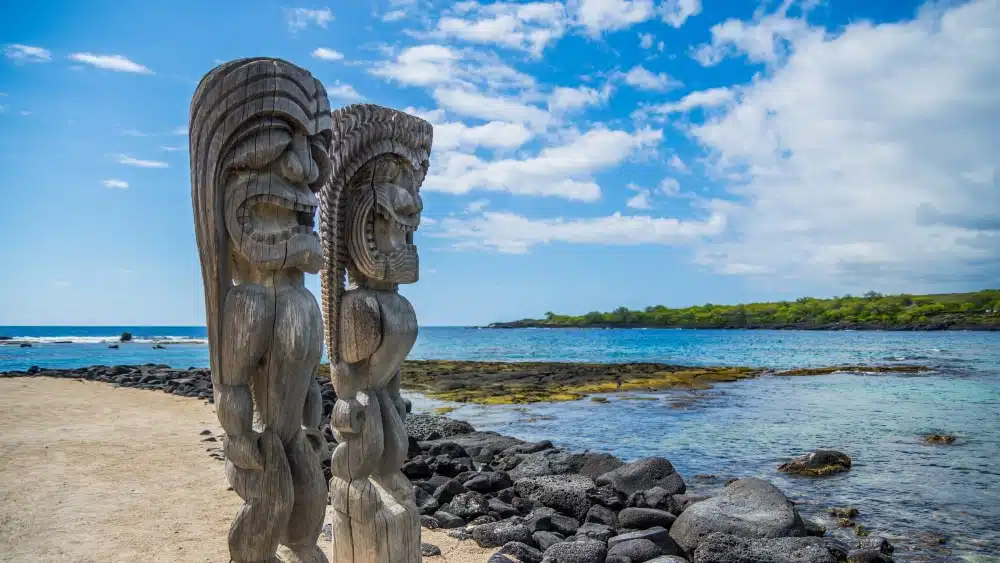
Google Rating: 4.7
More than a tourist attraction on the western edge of the Big Island, Puʻuhonoa o Honaunau National Historical Park was once royal grounds and a haven where ancient lawbreakers sought refuge. Sacred laws were paramount to Hawaiian culture and anyone who broke them faced severe consequences. A lawbreaker could, however, flee here where a ceremony of absolution would occur. Afterward, the individual was free to return to society. Visitors can enjoy a self-guided walking tour to explore the park.
All parks have been ranked based on the criteria of popularity, distance from the closest major cities, violent crime, property crime, Google ratings, and the number of Google reviews.

 Your Guide to Closing Costs in Utah
Your Guide to Closing Costs in Utah